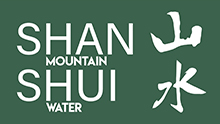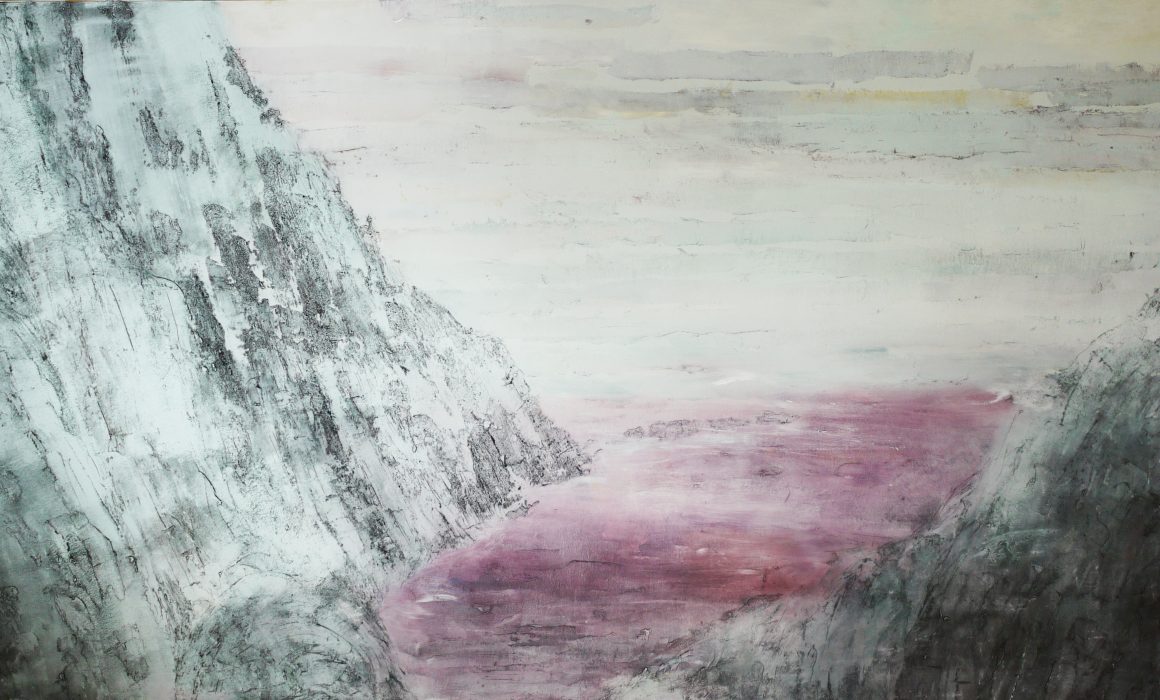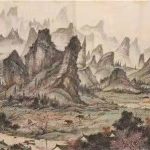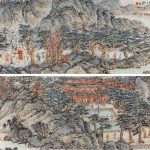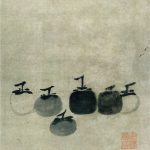Silence without a Name
Issue 4 – By; René Böll
It is not easy having to explain the complexity of artistic creation in a few words. Having to force into the restricting and established world of analytical abstractness everything that the artist himself experiences during the creative process, what he reflects on and what he finally expresses in his works – is often like being on a knife’s edge. We can come closer to the artist and his work or deprive him of his authenticity. It is not always possible to do justice to the artist and his work.
For what makes an artist’s work interesting and attractive, and gives depth to what is superficial, is often exactly those areas which elude the analytical mind and which cannot be perceived by the beholder at first.
Every artist has his own perception and consequently his own aesthetics as well. Both areas, perception and aesthetics, form an interwoven whole which has to be discovered if we want to go deeper into a work and find a way of comprehending it.
There are two important force-fields which exert an effect on my artistic work – firstly, the European painting tradition, which is particularly visible in the form of expression and the formal aesthetics of my paintings, and secondly my understanding of artistic creation, which is influenced by the spirit of Chinese philosophy, in particular Daoism, and relates to the traditional approach of Chinese ink painting.
Chinese have a very poetical but at the same time very difficult to understand language respecting there ink painting techniques: Chinese ink which, in the words of Huang Binhong, has to be as dry as an autumn wind when using the “dry brush” technique, but at the same time as moist as spring rain.
I tried to acquire the four different basic techniques of applying ink, in addition to “dry” also moist, light and dark, which constitute the basic skills of painting with ink.
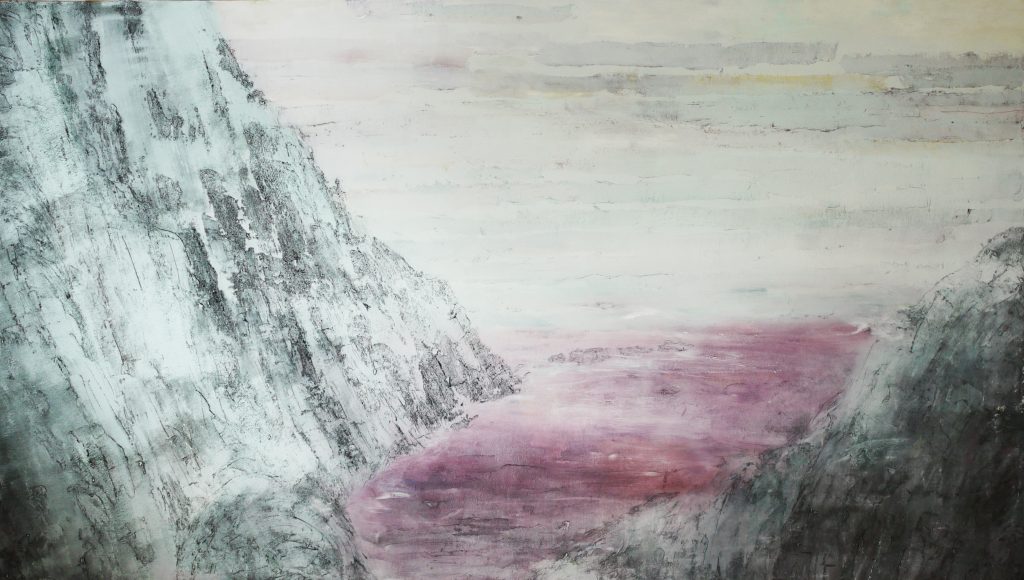
However, it is not just the materials but also the work process which require concentration and precision. The use of the brush and its touch demand from the artist the considering of “space” and “time”, where “space” means the way in which the brush touches the paper, which in turn depends on the type of the brush tip and the angle at which the brush is held. The Chinese brushes for painting and calligraphy are made from very different types of hair including sheep’s, goat’s, horse’s and wolf’s hair. “Time” means the speed with which the brush is moved across the paper. When using the lightly glued and, therefore, highly absorbent Xuan paper, the stroke becomes broader the slower it is performed. Moreover, the ink allows gradual transition and variation in tone from the most delicate grey to the deepest black. The basis for this type of painting is the use of a particular Chinese Xuan paper, which in the West is only very inadequately referred to as “rice paper”.
I studied the painting techniques of the baroque and renaissance period for some time. I was always intrigued by “how Rembrandt managed to paint these lights and darks. The paintings by Rubens, constructed in several, very thin layers, applied in such a fluent and easy manner, have particularly influenced me as regards painting technique and have characterized my way of working.”
My intense studying of colour, and the exceptional significance I attach to it, has its roots here. I collected an unusual wealth of the most diverse colours – earth colours and mineral colours, hundreds of pigments of natural earth colours, ground minerals such as orpiment, vermilion, jasper, coral, malachite, as well as plant and animal colours. The latter, however, are often subject to fading, but I have also collected a large number of modern organic and inorganic colours which when mixed with other pigments come close to plant colours. I prefer natural colours because in my experience they are more vivid and have a much larger spectrum. Different inks are also found among the treasures I keep in my studio: such as glistening oil-soot ink and the less shiny pine-soot ink, also ancient inks, which is particularly well suited for the greyer tones. I prepare them myself, as I do with almost all of my colours, and not until I need them.
For the underpainting of my paintings on canvas I use various basic elements like egg, oil, wax-soap, casein, resin, balms and gum arabic, sometimes also acrylic dispersion.
However, these are mixed with other pigments, similar to plant colours which display a larger spectrum and are not as “garish” as most colours used today in industry, advertising and art. In this way I try to obtain vivid yet permanent colours similar to plant colours used in the past, particularly by book illuminators, which unfortunately are barely colour-fast to light. It makes a difference to me whether a colour is manufactured synthetically or whether it is thousands of years old.
On top of underpainting, the picture is built up in many varnished, semi-opaque or opaque layers using oil colours produced in a way similar to handcrafted colours, as well as oil colours freshly ground each time whenever special tones are needed. The varnish, the adding of different transparent layers on top of each other, plays an important role in my paintings. Through the varnish I can use both the additive and the subtractive blending of colours in my paintings. I have always been intrigued by how Rembrandt managed to paint these lights and darks. The paintings by Rubens, constructed in several, very thin layers, applied in such a fluent and easy manner, have particularly influenced me as regards painting technique and have characterized my way of working. If we look at the originals, we see how lightly, how confidently and how vividly the colours have been applied. The spontaneity of the way the brush is moved by both artists bears resemblance to that in Chinese ink painting.
Many of my small watercolours work as testimonies to colour, the power of which could almost be said to be demonstrated reciprocally to the limited expressive possibilities of the small format.
Critics said that the beholder of my landscapes painted in egg tempera and oil is inevitably attracted by the atmospheric effects of light produced by the colours, which sometimes appear elevated to mythical heights and give the actual theme of the painting a mysterious, hermetic character. Echoes of the metaphor-like use of light and colour in Turner’s later paintings come to mind immediately, but also associations with the powerful, rounded and fluid forms in Edvard Munch’s painting are induced when looking at these barren shapes of landscape in dark, earthy tones.
However, my language of colours and shape lacks that dramatization which is more or less predominant in the works of these painters, or, as one might be tempted to say, in the European painting tradition as a whole.
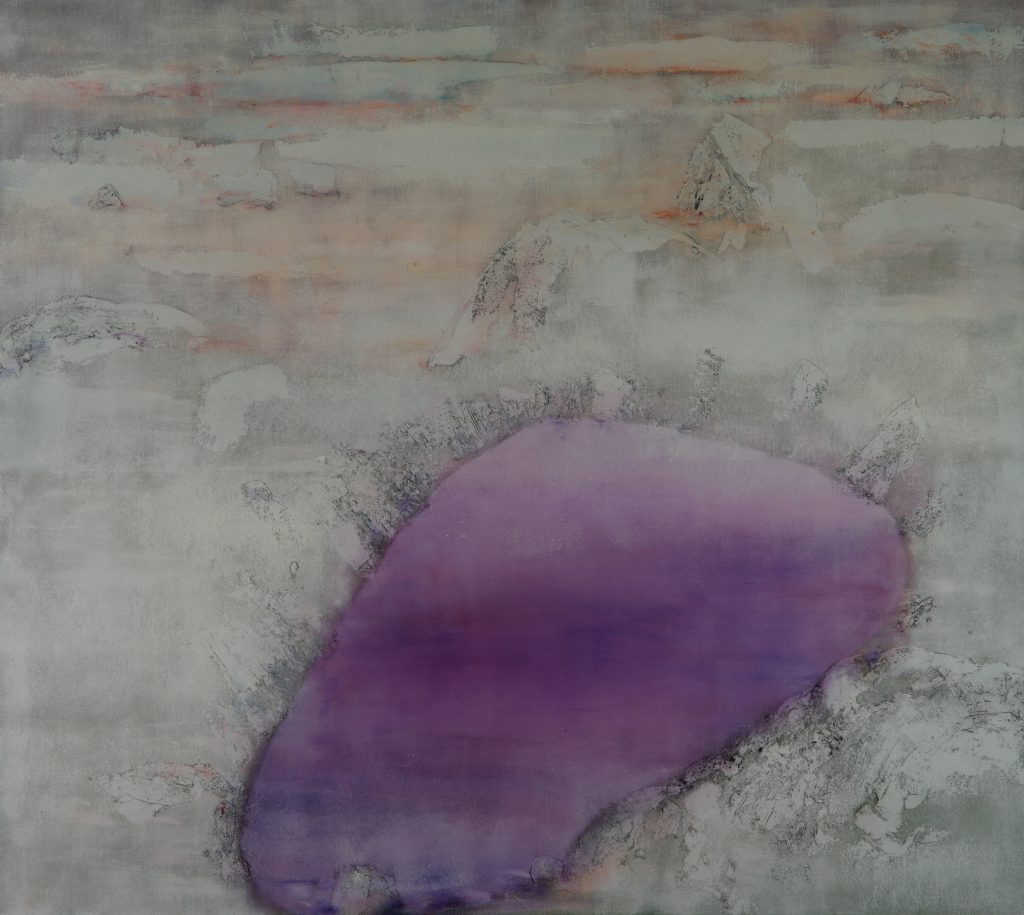
At the centre of my aesthetics of colour is harmonization – a harmonization which relies on the Chinese concept of Yin and Yang, in which opposing as well as complementing elements are taken to be a natural whole. Thus, properties such as light and dark, warm and cold, firm and fluid – basically all those characteristics which meet in the colour – have to be explored and captured so that they can be brought together in a natural, harmonious whole. I prefer the varnish technique, and the possibilities of additive and subtractive blending of colours comes closest to my idea of the harmonious changeability of colours. I have coined the terms “to yingify” and “to yangify” to describe the change of colours from the warm pole to the cold pole, a change full of nuances.
I have intensely studied the mixing of colour. I am less interested in theories on colour than I am in the considerations of how I can change a given colour by mixing it in such a way that I obtain exactly the tone I wants. When it comes to the actual process of painting the mixing is done intuitively. You have to have internalized colour and technique in such a way that you don’t have to think about them. Many of my watercolours are also painted in several layers. Apart from ready-made watercolours, I also use relatively coarsely ground pigments – similar to the way I also use them for oil painting. These pigments are soaked into the paper in a very fluid way with gum arabic, through which almost three-dimensional effects are achieved.
It is in Chinese ink painting and calligraphy that my understanding of colour based on the Chinese concept of Yin and Yang, derived from my concept are expressed artistically in the most distinct way. I devoted myself to the genre of Chinese ink painting, in which the black ink unites the essence of all colours, as it were, and in which the natural phenomenon of changeability and the mastery of this has found its most subtle expression
It is perhaps the specific spirit which has to be underlying in order to master ink painting. If painting is understood as a specific way of expressing comprehension, then the specific form of comprehending Chinese ink painting is the Chinese philosophy of nature, with its particular expression: Daoism.
Clearly it is this connection to nature being so closely linked to painting which comes so close to my temperament and understanding of artistic creation.
If I quote as the title for my paintings Bada Shanren, that original Buddhist-Daoist monk painter of the 17th century, or Wang Wei, the famous poet and painter of the Tang period, it is because in a particular way these men have expressed in their art a Daoist view of the world, a view attached to nature.
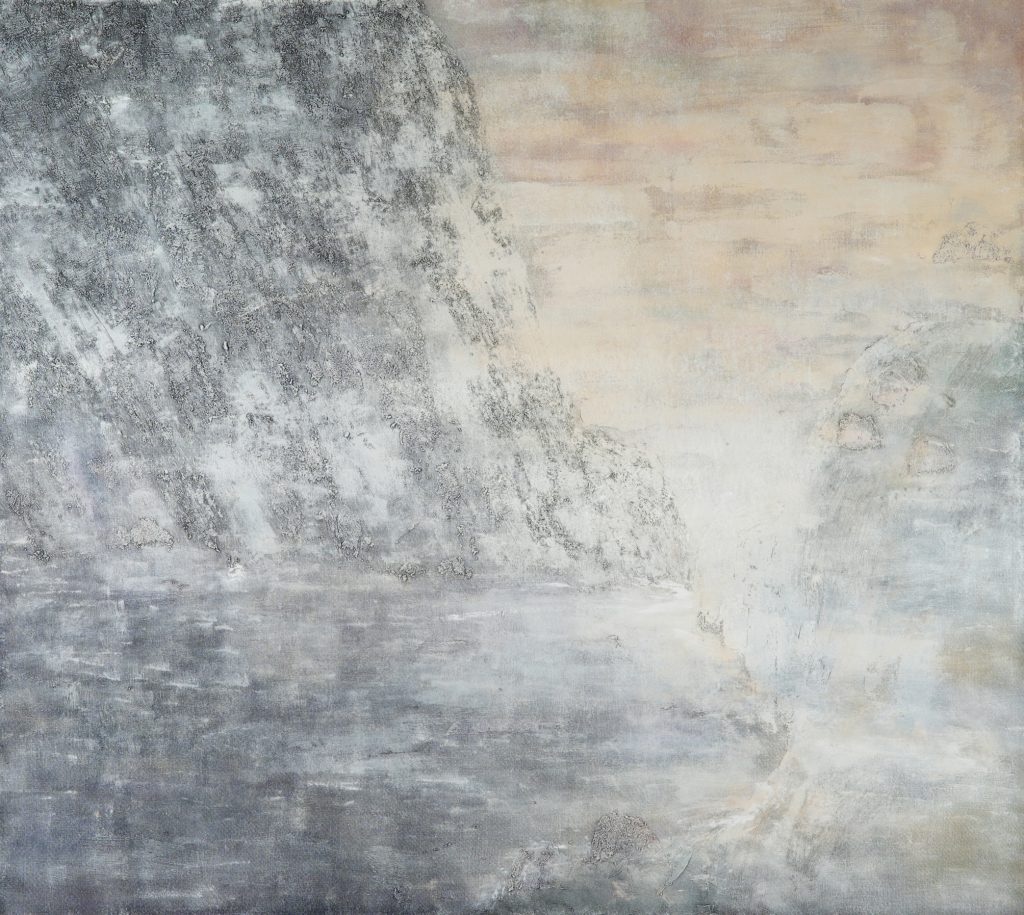
Thus the landscapes depicted in my paintings are, just like the Chinese landscape paintings, not views of concrete objects but vehicles of meaning for something which is underlying and reaches beyond the external appearance of things. The landscape, in Chinese this word is formed from the two signs for mountain, shan 山 and water, shui 水, is a synonym for nature in its broadest sense. Nature particularly enables us to see beyond the external appearance of things without having to forfeit the joy and fascination at its forms and its variety.
The landscapes in my paintings are in many respects reminiscent of the world of imagination of Chinese Daoism. My landscapes radiate quietness and solitude. They are places which are far away from the distracting and tiring influences of the din of civilization, in them time is different from the time of history. Nature is left to herself. Her elements – fire, earth, water, air, the sun and the moon, seas and mountains – follow the Dao, the “eternal way” in continuous change. Nor is man, embedded in nature, the measure of all things. In the form of death, the skeleton or the skull – a very frequent motive in my work – he too is integrated into this great cycle of Dao. In the process of dissolution, man is not dramatic or romantically small, but natural without any sign of resistance. Life and death, like all phenomena of nature, have no presage.
This view of the world may disconcert many people, they do not know it or perhaps they do not know it any more.
Many titles, which I formerly gave to my works, such as Forgetting Oneself, Corresponding to Nature, or Fearless Emptiness are Daoist terms as well and signalize my intention and method at the same time.
The expressions describe the different elements which underlie the Chinese term Wuwei 无为, “non-action”. Wuwei embraces many aspects, also including the close observation of nature through contemplative reflection – only in this way can the qualities and natural tendencies of things be captured and followed. Wuwei further comprises practical experience with tools – the ancient Daoists were not only enthusiastic alchemists but, unlike the Confucianists, they also valued handicrafts, because handicrafts generally understood the true nature of materials better than sophistic knowledge. Finally, Wuwei also embraces that inner peace and quiet and balance, that “emptying oneself” of subjective conditionality, of the wanting which moves against what is natural – which today we would call manipulated demands.
Still, I make numerous trips taking me to regions with visibly powerful landscapes: Ecuador with the Andes, the jungle and the Galápagos Islands; Ireland, in particular Achill Island; Kenya; Russia the Gobi and Taklamakan deserts in North West China; but also the countryside back home as well as my garden are inspirations for me. The landscape that particularly appeals to me, is that of the Arctic and the Antarctic; that’s where I would like to go to experience snow and ice intensely. I believe, that my relationship with nature is closer than that of many of my colleagues. I view the subject attentively and records my impressions in sketchbooks in order to absorb them in a concentrated way. Later, in the studio I paint from memory, completely free. In the course of this, naturalistic forms recede into the background and lose importance. Thus I attempt “to paint without intent and purpose” – in the tradition of the Daoist Wuwei, the concept of “non-action” or of “not demanding”, in order to express my soul and feelings. In this way pictures are painted as if done in a trance. I am best able to achieve this at night or at dawn.
Like the Daoist alchemist in search of the elixir of life, I am always in search of ever newer colour substances and mixtures of colours. I learned Chinese ink painting techniques from Chinese artists and became absorbed in the meaning of Chinese philosophy and painting.
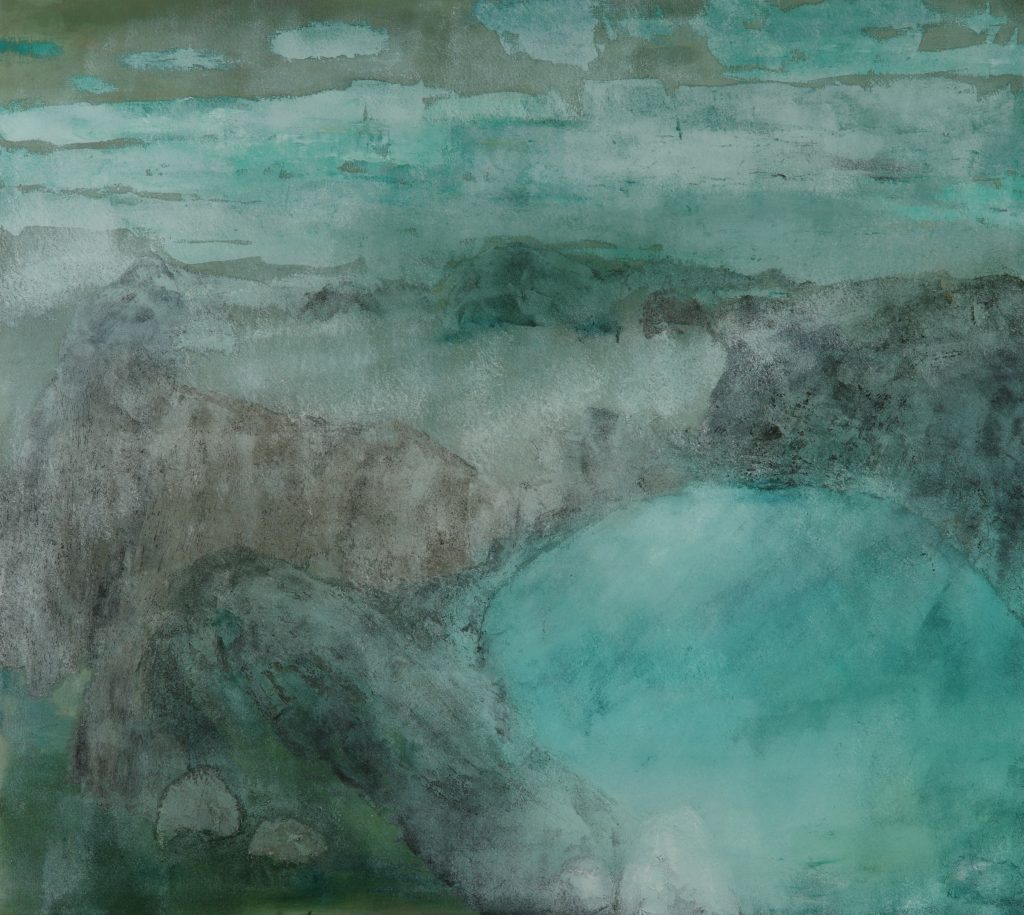
I meditated and practised taichi and qigong for years. It is necessary to stimulate those energies through exercises, to unblock them and free them from obstacles, and to make them flow. These exercises are not only meant to strengthen the abilities of the body but also the mind. The relation of these exercises, in particular of their medial aspect, to artistic creation is well known. (Qi 气 has, by the way, become an important aesthetic term of quality in Chinese calligraphy and painting. If a picture or an example of calligraphy does not have qi, its quality is impaired).
My art is concerned with “self-achievement”, creating spaces within, and is less directed towards the outside, aggressive self-portrayal, and because of that it tends to move me closer to the Far Eastern image of the artist than that of many of my Western contemporaries.
In this sense my ink painting is not attempted at copying Chinese originals either, but expression of a spirit which is capable of moving outside trends in popular art and capable of creating its own worlds of imagery in relation to other cultures.
Chinese critics said, that I have found an authentic form of expression in my works with ink, as regards brush technique, structure of the picture and composition.
Liu Xiaochun, a well-known art critic, commented that I am penetrating deep into Chinese culture and comprehend it. This attitude distinguishes me completely from the other artists who dealt with Far Eastern art. He writes: “Artists like Hans Hartung, Franz Kline, Robert Motherwell, Henri Matisse, Joan Miró, Jackson Pollock, Pierre Soulages, Antonio Tàpies and others used Far Eastern art as a kind of quarry, but they paid little attention to ink technique and the philosophical backgrounds.”
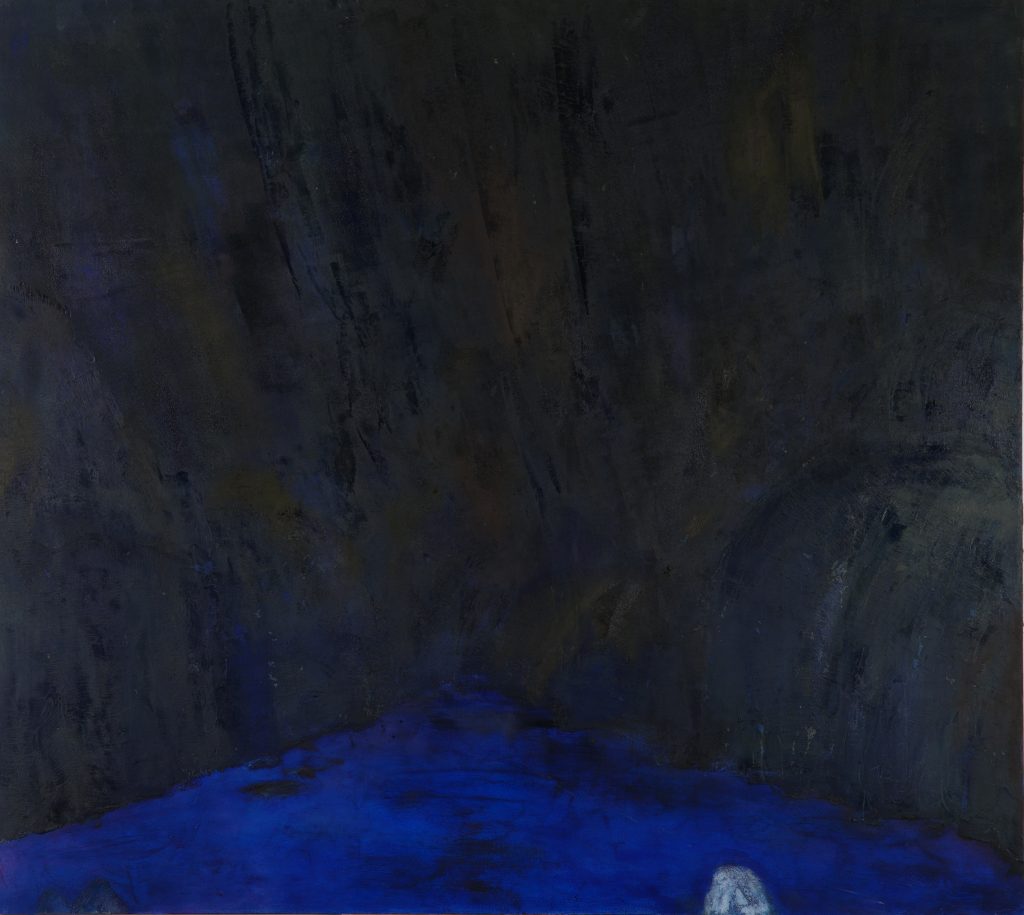
Thematically, I take up motifs of my oil paintings and egg tempera paintings. However, these motifs, such as the sun, the moon, mountains and water, appear to have detached themselves from the overall context of my landscapes, and are developing a life of their own. Nature suddenly seems very close, its concrete forms more and more turn into their qualities, which now reveal themselves in ink and brush technique: light and dark, from jet black to light grey, wet and dry, soft and hard, smooth and fissured, concentration and dissolution all come to the foreground. The concreteness which eluded the vision of the landscapes becomes abstract, abstract becomes concrete. Vision and detail meet and blend together in the infinite space of the white Xuan paper.
“The dimension which counts for the creative man is the space which he creates for himself. The inner space is closer to infinity than the other one and it is the privilege of a balanced spirit – and the search for equilibrium is essential – to be just as aware of the inner space as things external.” (Graves)
In my mind prehistoric art has as much contemporary relevance as to days art – the same holds true for East Asian art or pre-Columbian excavations. Many modern art movements mean little or nothing to me. My esteem for Rembrandt, Goya, Odilon Redon, Turner, Munch, Klee and many others continues to grow, even as it diminishes for others as Beckmann, the expressionist. Other artists as Bonnard, whom I rejected in the past, I now admire greatly and new one who were previously unknown to me, such as Frederic Edwin Church I am constantly adding to my list of respected painters. I follow no canon in my work and embrace no ideological tenets or goals. It is irrelevant to me whether my works are “modern” or “trendy” or as an exhibition in London was called a “sensation”.

René Böll, a painter & graphic artist, was born in Cologne in 1948. His autodidactic study of drawing and painting began in 1963. In 1966 he began lessons with Bernhard Müller-Feyen, and in 1967, studies of painting and printmaking (primarily lithography) in Cologne and Vienna. He devotes himself to painting, drawing and printmaking (etchings + lithography). In addition to his work as a visual artist, he worked as a publisher, and he is also a co-founder of the Heinrich Böll Foundation and the administrator of the literary works of Heinrich Böll. From the 70’s onwards, René Böll worked intensively with Chinese ink techniques and Chinese philosophy. His preferred motifs are landscapes that reflect an intense preoccupation with nature and a preference for natural colors. His works are the subject of numerous solo and group exhibitions at home and abroad, including in China, Japan, USA and South America. He is the author of numerous publications, and the editor of the six-volume edition: The Complete Letters of Vincent van Gogh, “Cillìnì” Children’s burial grounds in Achill etc. And as of October 2002, a professor at the Beijing Nationality University of China.
Read the full magazine
